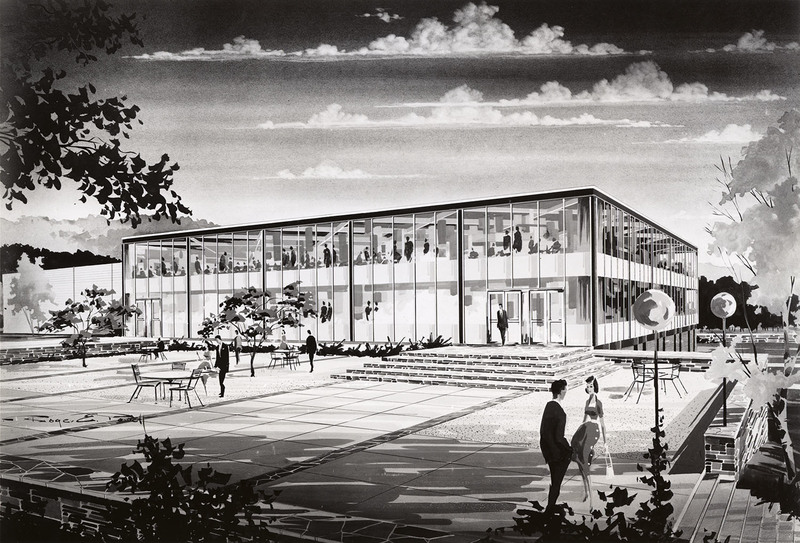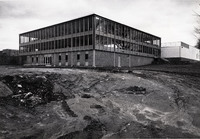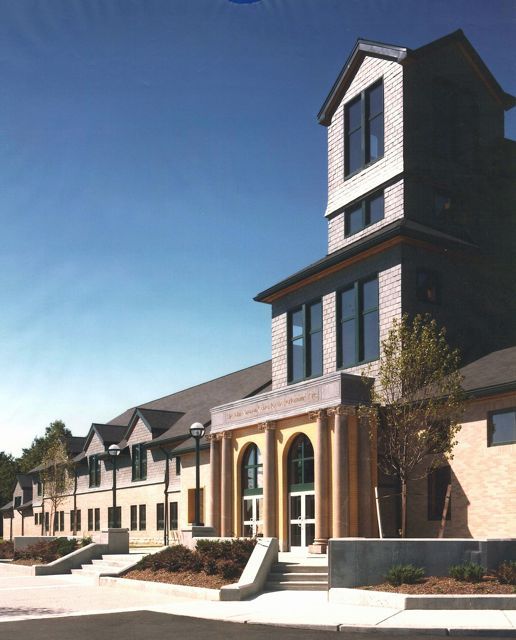Community Buildings
Community Spaces
Community spaces are where the college population gathers to eat, read, study, exercise, or enjoy a show. Rhode Island College has several spaces designed throughout the decades to enhance campus life.

Above: Architect's rendering of Donovan Dining Center, 1962. (Photo from RIC Special Collections). Below: Donovan Dining Hall, shortly after completion, 1962. (Photo from RIC Special Collections), Donovan Dining Hall, with numerous additions and stylistic changes, 2012. (Photo by Liz Warburton)
Fred J. Donovan Dining Center
Frederick Joseph Donovan was an English professor and later the Vice President of Rhode Island College from 1944-1966. Born in Providence, Donovan graduated from LaSalle Academy, Manhattan College, and the University of Detroit. Donovan began his teaching career in elementary schools before becoming a professor at Providence College in 1931, teaching English. Shortly thereafter, in 1938, he crossed Smith Street to join the faculty at Rhode Island College of Education. Donovan became Vice President in 1944, noting his opposition to a merger of the University of Rhode Island and Rhode Island College among his many accomplishments. Donovan died in 1980 at the age of 83.
The John Nazarian Center for the Performing Arts
The John Nazarian Center for the Performing Arts is named for RIC President and alumnus John Nazarian. Nazarian was born in Pawtucket and attended the Rhode Island College of Education before receiving graduate degrees at Brown University, the University of Illinois, and New York University. He began teaching at the Rhode Island College of Education in 1954, beginning his fifty-eight year career with the college. In addition to acting as a professor and Mathematics department chair, he held the positions of Associate Dean of Arts and Sciences, Special Assistant to the President for Planning, Vice President for Administrative Services, and Acting President before being appointed President in 1990. Nazarian’s accomplishments have been recognized throughout his life, with various fellowships, commendations, and awards. Notably, he was inducted into the Rhode Island Heritage Hall of Fame in 2004 and received the Rhode Island Council for the Humanities’ Honorary Chair Award for Lifetime Achievement.
Nazarian’s lifelong interest in the performing arts was celebrated in the John Nazarian Center for the Performing Arts, dedicated in 2000. Designed by William D. Warner, the architect known for the Providence Riverwalk, the building is a multi-purpose facility that houses the Music, Theatre, and Dance programs and provides space for the performing arts. Warner’s design incorporates granite columns salvaged from the original Rhode Island College of Education building that was demolished in 1997 when making way for the Providence Place Mall. Light colored yellow brick pays homage to that building and compliments the midcentury modern buildings on campus. Details such as slate roof tiles, mahogany ticket booths, and red cedar interior paneling stand in contrast to the stark modern design of the buildings surrounding it.


